Anti-Fascist Organizing Explodes on U.S. Campuses
Since the arrival of alt-right groups on campuses across the country, student activists are turning ad hoc protests into lasting organizations designed to tackle the phenomenon.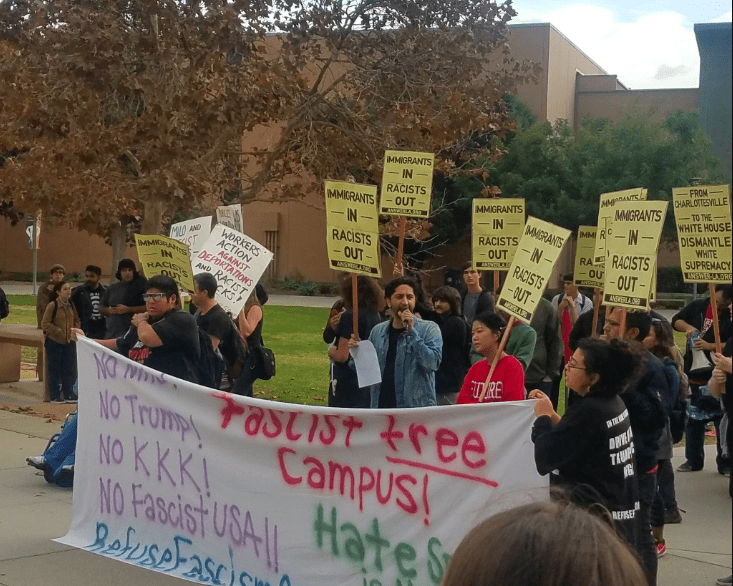 Students at California State University at Fullerton protest against speaker Milo Yiannopoulos in 2017. (Al Dia / Twitter)
Students at California State University at Fullerton protest against speaker Milo Yiannopoulos in 2017. (Al Dia / Twitter)
On December 13, six members of the University of Michigan’s Board of Regents shared a statement titled “United Against Hate,” showing their opposition to the current negotiations happening between the university and white nationalist Richard Spencer. After a disastrous appearance at the University of Florida at Gainesville, which saw mass actions by the No Nazis as UF coalition, Spencer had set his sites on the University of Michigan for his so-called “alt-right” recruitment.
Students reacted quickly, organizing walkouts and building occupations at the University of Michigan, Michigan State, and Eastern Michigan University, as well as satellite community colleges. Students 4 Justice, an organization formed in 2016 around ongoing issues of campus racism staged a walkout at the Ann Arbor campus on November 29.
The confederation of organizations took their inspiration from the growth of campus anti-fascist groups that have been taking on the appearance of alt-right figures like Spencer over the last year. Instead of waiting for Spencer’s appearance, students begin organizing once they learn that he is planning on coming to campus. This is the same impulse that has pushed towards the creation of ongoing organizations of students and faculty to deal with the ongoing pressure from alt-right organizations that see campuses as their prime recruiting ground. As 2018 begins, anti-fascist campus groups have exploded, changing the dynamic in universities to confront the kind of violence promised by the alt-right.
The Making of a College-Based Anti-Fascist Network
Ever since 2015, when the Trump campaign emboldened white nationalist organizations under the alt-right banner, the movement’s figures and followers have targeted college campuses. College students are seen as upwardly mobile and are often from a different demographic background than traditional white nationalists. These organizations have also made targeting “progressive” areas a key part of their strategy, trying to provoke protesters for optics.
“Since a lot of these alt-right leaders are from the middle and upper classes, they relate to intellectual battles over street fights,” said Alexander Reid Ross, author of “Against the Fascist Creep” and researcher of far-right movements. “To turn the university into a site of struggle, they carefully cultivated an aesthetic and attitude that caters to an audience of middle-class students and faculty, who traditional fascist skinheads, Klansmen and Christian Patriot-types find it more difficult to reach.”
With the exception of historically black schools, universities are ideal settings for groups like Identity Europa, Vanguard America and the Traditionalist Workers Party to try and reshape the American consciousness. Since the arrival of alt-right groups, anti-fascist student activists have been turning ad hoc responses into lasting organizations ready for a response.
One of the emerging projects — the nationwide Campus Antifascist Network, or CAN — has expanded to quickly become the largest and most well represented of these groups on college campuses.
CAN was officially launched in August as student, staff and faculty activists began noticing that alt-right organizations were targeting universities amid a growing number of reports of racist harassment and hate violence on campuses. Working in tandem with the manufactured outrage of far-right media outlets like Breitbart, the trolling and harassment of students and faculty created the need for a national network of local chapters.
“It started because we had already been seeing a lot of hate speech on campuses, so we figured we needed some kind of a national group to address what we saw as a rise of this neo-fascism trying to worm itself into universities,” said Adam Miyashiro, a medieval literature professor at Stockton University, who sits on CAN’s steering and academic defense committees.
CAN now has more than a dozen chapters and more than 400 members in the United States. Chapters are popping up in Canada and the United Kingdom as well. With a horizontal structure that avoids hierarchical leadership, the model is intended to provide local chapters the autonomy to organize in their local region to the appearance of organized alt-right groups or threats of racist violence on campus. CAN has garnered the endorsement of a multiracial group of student and faculty groups and individual writers and educators, such as Junot Díaz, Steven Saliata, Farah Jasmine Griffin and Vijay Prashad.
Protesting Milo and ‘the Bell Curve’
At California State University, Fullerton, the October 30 appearance of former Breitbart provocateur Milo Yiannopoulos pushed that campus’ CAN chapter to have its first organized response — a counter action that brought together a coalition of student and political organizations. The goal was to set a precedent that white nationalist figures like Yiannopoulos would not appear on campus unopposed. CAN built a large coalition of student groups from across the spectrum, such as black and Latinx student unions. While Yiannopoulos spoke to a captive audience of both students and outside community supporters, CAN held activist workshops, set up tables with political literature and created networking opportunities for larger activist coordination.
While there were some physical clashes between Yiannopoulos supporters and counter-protesters, things went relatively smoothly at the CAN-organized event itself.
“[Yiannopoulos supporters were] picking arguments, disrupting tablings and pretending to be media,” recalled Clayton Plake, a Ph.D. candidate at Claremont Graduate University and a CAN organizer. “We are in the process of developing contacts, both with academic, activist and scholarly organizations that are all about empowering communities to stand up against the far-right threat and the state violence that comes along with it.”
At the University of Michigan, CAN activists took an even more confrontational approach when, on October 11, Charles Murray — author of the controversial book on race and IQ, “The Bell Curve” — began to speak. Critics have labeled Murray’s work as racist pseudo-science that is eugenic in nature. The CAN activists heckled Murray during his speech, and they projected the words “white supremacist” above him.
As the CAN network grows, organizers are also distributing organizing plans to “at-large” members in areas without a chapter so that they can easily respond to the alt-right groups recruiting or harassing students on campus.
“The threat is that they would go uncontested,” said Chris Vial, organizer with the University of Connecticut CAN chapter. “The danger of the alt-right presence or even just some kind of white nationalist group is that they politically organize and mobilize these kind of ‘casual acts of racism.’”
Campus Chapters of Southern Poverty Law Center
The Southern Poverty Law Center, or SPLC, has a multi-decade history of targeting far-right groups through research and reporting, as well as community organizing and lawsuits. It has forced some of the largest white nationalist organizations in the country to close down, including the Aryan Nation, United Klans of America and the skinhead White Aryan Resistance. The group’s work has often been more journalistic and educational for state agencies. But in the last two years, in response to new campus-centered white nationalist associations, SPLC has built college chapters as well.
On October 30, the Columbia University chapter of the SPLC, along with coalition partners, including the Liberation Collective, held a march and rally in response to the appearance of far-right internet celebrity Mike Cernovich. Known for his virulent sexism, “America First” nationalism and conspiracy mongering, Cernovich was brought to Columbia’s Lerner Hall by the College Republicans for a speech.
“We don’t want white supremacy at our school or in the community it exists within. We want this school’s administration to know that [by allowing alt-right speakers] they’re playing games at the expense of black and brown lives and we will not be passive nor silent in this process,” said Jasmeen Nijjar, a social work graduate student and organizer with the SPLC campus chapter and the Liberation Collective.
At Cernovich’s event, anti-fascist activists lined people up to filibuster during the question-and-answer session, had protesters hold up signs during his talk and held an off-campus rally that marched through Harlem onto the campus. “Each action differs as it is based on the response and message we are trying to put out,” Nijjar said.
When Tommy Robinson, co-founder of the anti-immigrant English Defense League, gave a Skype lecture on October 10, members of the campus chapter of the SPLC organized a protest and shouted down his talk, rendering it inaudible. The Columbia administration took a harsh response to this activism, threatening 20 protesters with disciplinary action. Meanwhile, Nijjar and others were banned from Columbia University College Republicans events, though that was lifted after a couple of weeks.
On and Off Campus
While student and faculty-specific groups have a special stake in confronting white supremacy on campus, the broad-based anti-fascist movement also views the college terrain as uniquely critical. With alt-right groups making campuses their prime target, both to get a hip crowd of educated recruits and to try and reshape the institutions that set the country’s intellectual attitudes, many anti-fascist organizers are working to bring the larger movement back onto the campus as well.
The Virginia-based One People’s Project, founded by Daryle Lamont Jenkins, is one organization that has been campaigning around the public appearances of white nationalists for almost 20 years. The strategy he employs on campuses is two-fold, confronting the events as they happen by organizing counter-protests, and rooting out the figures on campus that are bringing white nationalists to campus.
“You can call out the Ann Coulters and the Milos all you want, but the fact of the matter is you have someone on campus who is giving them a platform,” Jenkins said. “Those people need to be called out effectively so they are not only not able to do that again, but they are going to have a hard way to go once they get out of college because everybody’s going to know what they’re about.”
The cultural shift in the alt-right made many young men who were radicalizing online believe that their participation came with few consequences. As the public revealing of personal information — a tactic known as “doxing” — against white nationalists expanded beyond just the core of anti-fascist organizing, it began hitting alt-right students especially hard. Those joining groups like Identity Europa in their college years are finding — upon graduation — that they limited their job potential, raising the social cost of participation while enrolled.
Some critics have said that doxing of alt-right activists leads to more dedication on their side, limits their “free speech” rights, and is an invasion of privacy. But by confronting those working to draw in new recruits at a vulnerable point in their early professional lives, doxing has proven to be one of the most effective anti-fascist tools for disrupting formal white nationalist organizations and shrinking the sphere of less committed supporters.
The organizers mobilizing against Richard Spencer’s speech at the University of Florida, Gainesville on October 19 — led in part by a coalition called No Nazis at UF — especially relied on the outside community, where many groups had been doing the work of tracking and confronting the far-right in the year since the election.
“The locals of the city were even more concerned because they didn’t want another Charlottesville happening,” pointed out No Nazis at UF organizer Omar Syed Muhammed. Organizations like Planned Parenthood and the Democratic Socialists of America lent support, including planning community events to make signs and showing their disappointment with the university administration’s decision.
Spencer’s attempts to recruit in Michigan sparked a mass student revolt, resulting in building occupations and student walkouts. Students 4 Justice were matched by organizations like Solidarity and Defense, an anti-fascist group that tied together the rise of alt-right groups on campus to the attacks on black churches in the region. As students returned to start their spring semester, the possibility of Spencer’s impending visit will hang heavy and act as inspiration for student groups that are quickly growing in response to his threat.
On January 18, Michigan State University finally gave the go-ahead to Spencer’s appearance despite the back and forth that has transpired for months. Spencer’s attorney, white nationalist activist Kyle Bristow, has promised to continue the lawsuits to force the alt-right’s way into campus venues, but in Michigan, and across the country, the number of anti-fascist campus groups promise to limit the scope that far-right appearances can have.
Your support is crucial…With an uncertain future and a new administration casting doubt on press freedoms, the danger is clear: The truth is at risk.
Now is the time to give. Your tax-deductible support allows us to dig deeper, delivering fearless investigative reporting and analysis that exposes what’s really happening — without compromise.
Stand with our courageous journalists. Donate today to protect a free press, uphold democracy and unearth untold stories.
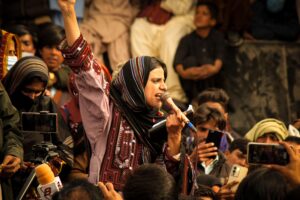
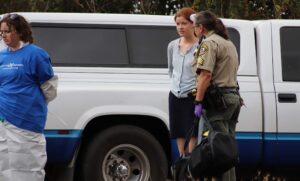

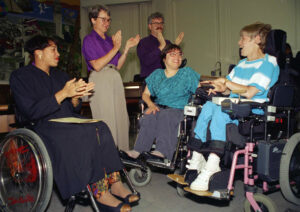
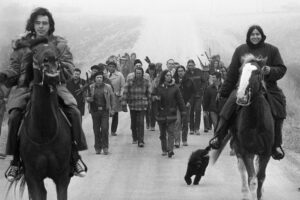
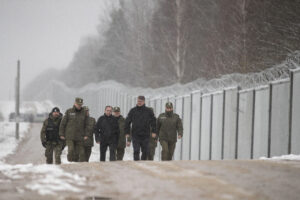
You need to be a supporter to comment.
There are currently no responses to this article.
Be the first to respond.